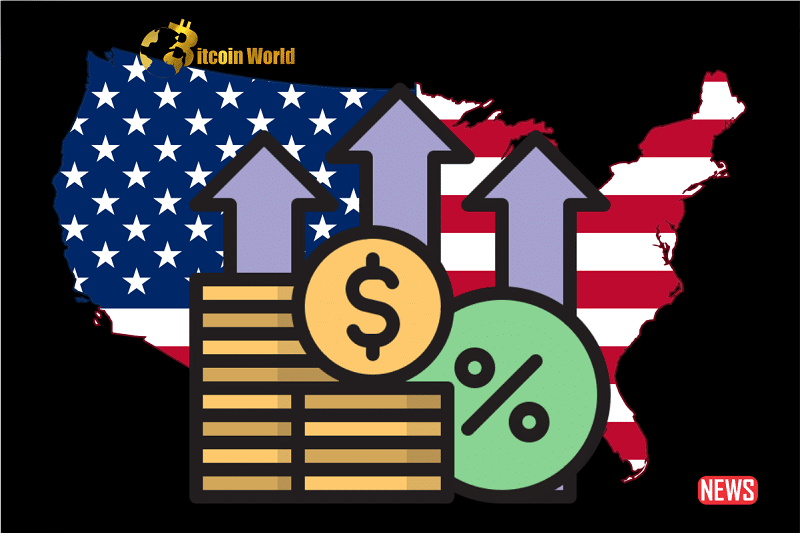Are you feeling the pinch in your wallet lately? You’re not alone. A recent report from the Federal Reserve paints a stark picture of the financial pressure cooker many US households are currently facing. Buckle up, because the numbers are eye-watering: Americans are now shelling out a staggering half a trillion dollars in interest payments. Let’s dive into what’s driving this surge and what it means for your pocketbook.
Interest Payments Skyrocket: What’s Going On?
The latest data from the St. Louis Federal Reserve, highlighted by The Kobeissi Letter on September 17th, reveals a startling trend. As of July, personal interest payments in the US hit a record-breaking $506 billion. That’s not just a small bump; it’s an 80% leap since 2021! To put it in perspective, we’re on the verge of exceeding the entire interest payment total for 2022 – and this figure doesn’t even include mortgage interest!
Key Takeaways:
- Record High: US personal interest payments reached $506 billion in July.
- Massive Surge: An 80% increase since 2021.
- Beyond Mortgages: These figures exclude mortgage interest, indicating a broader debt burden.
But why are interest payments climbing so rapidly? The answer lies in the Federal Reserve’s battle against inflation.
The Fed’s Inflation Fight: Interest Rate Hikes and Their Impact
To tame the beast of inflation, the Federal Reserve has been aggressively raising interest rates. Currently sitting at 5.5%, these hikes are designed to cool down the economy by making borrowing more expensive. While the intention is to curb rising prices, the immediate effect is a significant jump in the cost of borrowing for everyday Americans.
Think about it: home equity lines of credit, auto loans, credit cards – all of these become pricier when interest rates go up. Many households are now facing repayments on these financial instruments that are considerably higher than they were just a couple of years ago. And with inflation still hovering at 3.7% over the last three months, the squeeze on household budgets is intensifying. Remember, the official inflation rate often doesn’t fully capture the real-world price increases consumers experience daily.
Will Interest Rates Climb Higher?
Unfortunately, the pressure might not ease up anytime soon. Economists are predicting another interest rate hike by the Federal Reserve later this year. And Fed Chair Jerome Powell, while suggesting a potential pause in rate hikes in September, has made it clear that inflation remains “unacceptably high.” He stated the Fed is ready to raise rates further and keep them at a restrictive level until they are confident inflation is heading sustainably towards their target.
What the Fed is Saying:
- Inflation Still Too High: Despite some progress, the Fed considers inflation unacceptably high.
- Prepared for More Hikes: Further rate increases are on the table if deemed necessary.
- Rates to Stay Elevated: Expect interest rates to remain high for an extended period.
The Double Whammy: Dwindling Savings and Rising Costs
Adding fuel to the fire is the alarming trend of dwindling personal savings. The Federal Reserve has even predicted that US households could completely deplete their savings by the end of the year. This means less of a financial cushion to absorb these higher interest payments and rising living costs. When savings run dry, disposable income shrinks, impacting everything from daily expenses to investments.
Impact on Investments and Crypto
With less disposable income, investments, especially riskier assets like cryptocurrencies, could take a hit. The crypto market, already facing its own set of challenges, has shown limited momentum amidst these broader economic headwinds and a lack of clear impetus from the US government.
Ripple Effects Across the Economy
The combination of soaring interest payments and shrinking savings isn’t just a household-level problem; it has broader economic implications. US banks are also feeling the strain, experiencing significant deposit outflows and relying on record levels of the Fed’s banking bailout fund. These are all interconnected pieces of a complex economic puzzle.
Navigating the Financial Storm: What Can Households Do?
While the economic outlook may seem challenging, understanding the situation is the first step towards navigating it. Here are some actionable insights:
- Review Your Debt: Take a close look at your debts – credit cards, loans, lines of credit. Understand the interest rates you’re paying.
- Prioritize High-Interest Debt: Focus on paying down debts with the highest interest rates first to minimize overall interest payments.
- Explore Refinancing Options: If possible, explore refinancing options for loans to potentially secure lower interest rates (though this may be challenging in a high-rate environment).
- Budget and Track Expenses: Create a budget and track your spending to identify areas where you can cut back and free up cash flow.
- Build an Emergency Fund: Even small contributions to an emergency fund can provide a safety net during uncertain times.
In Conclusion: Staying Informed and Proactive
US households are undoubtedly facing a significant financial squeeze as interest payments surge and savings dwindle. The Federal Reserve’s efforts to combat inflation through interest rate hikes, while necessary, are having a direct and substantial impact on personal finances. Staying informed about these economic trends and taking proactive steps to manage debt and finances will be crucial for weathering this financial storm. The broader economic consequences and ripple effects on various financial markets will continue to be closely watched in the coming months.
Disclaimer: The information provided is not trading advice, Bitcoinworld.co.in holds no liability for any investments made based on the information provided on this page. We strongly recommend independent research and/or consultation with a qualified professional before making any investment decisions.


